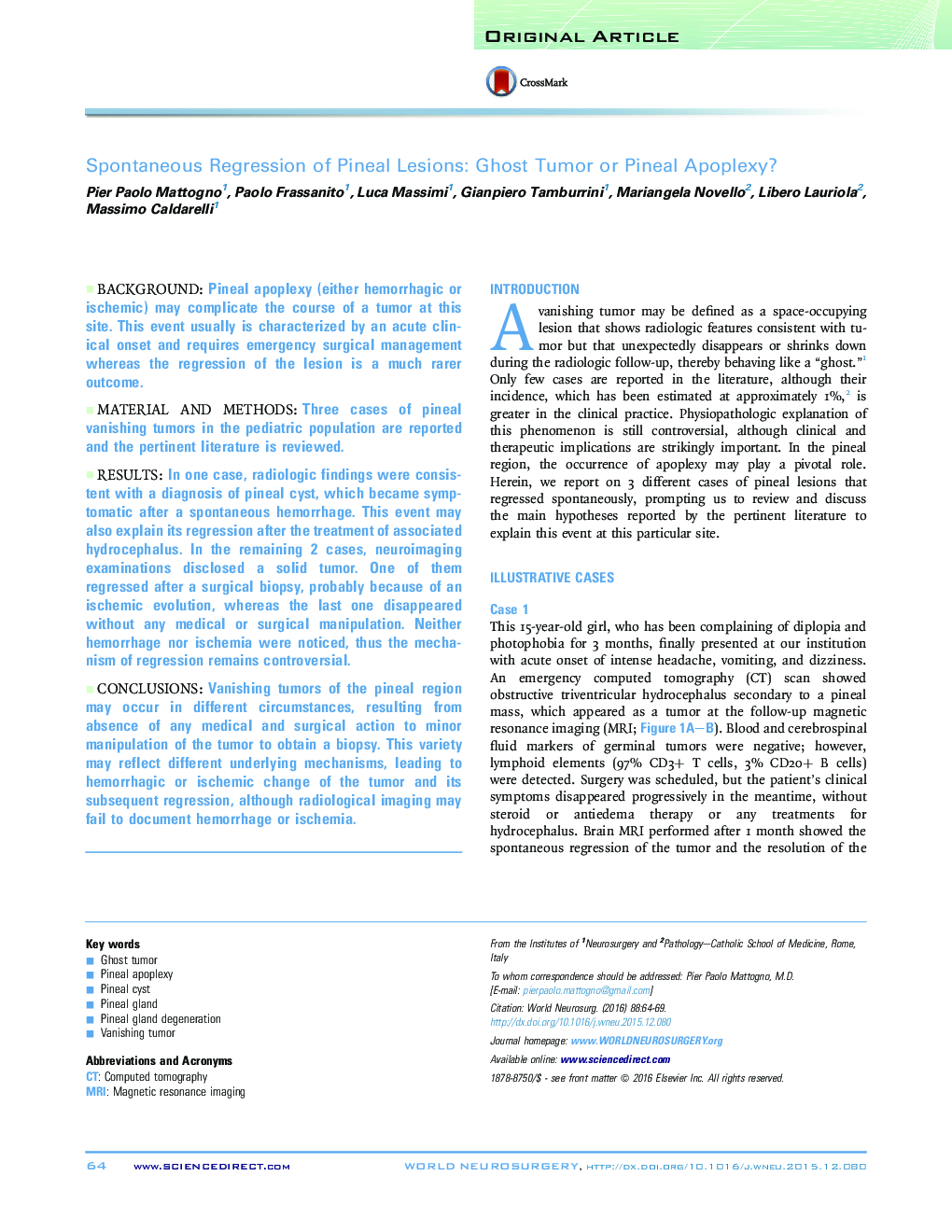| Article ID | Journal | Published Year | Pages | File Type |
|---|---|---|---|---|
| 6044168 | World Neurosurgery | 2016 | 6 Pages |
BackgroundPineal apoplexy (either hemorrhagic or ischemic) may complicate the course of a tumor at this site. This event usually is characterized by an acute clinical onset and requires emergency surgical management whereas the regression of the lesion is a much rarer outcome.Material and MethodsThree cases of pineal vanishing tumors in the pediatric population are reported and the pertinent literature is reviewed.ResultsIn one case, radiologic findings were consistent with a diagnosis of pineal cyst, which became symptomatic after a spontaneous hemorrhage. This event may also explain its regression after the treatment of associated hydrocephalus. In the remaining 2 cases, neuroimaging examinations disclosed a solid tumor. One of them regressed after a surgical biopsy, probably because of an ischemic evolution, whereas the last one disappeared without any medical or surgical manipulation. Neither hemorrhage nor ischemia were noticed, thus the mechanism of regression remains controversial.ConclusionsVanishing tumors of the pineal region may occur in different circumstances, resulting from absence of any medical and surgical action to minor manipulation of the tumor to obtain a biopsy. This variety may reflect different underlying mechanisms, leading to hemorrhagic or ischemic change of the tumor and its subsequent regression, although radiological imaging may fail to document hemorrhage or ischemia.
